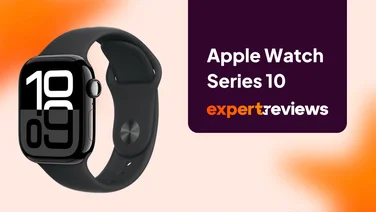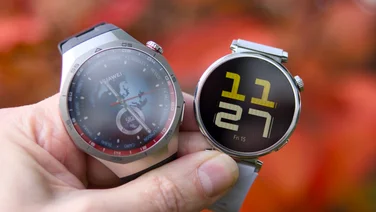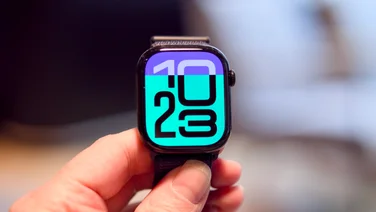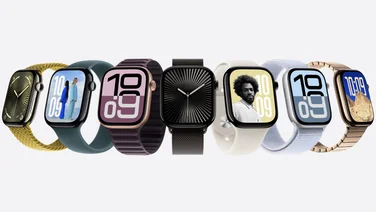To help us provide you with free impartial advice, we may earn a commission if you buy through links on our site. Learn more










- Stylish, minimalist design
- Looks like an ordinary watch
- 25-day battery life
- Limited range of notifications
- Connected app support could be better
- Quite expensive
Smartwatches often do a poor impersonation of classic timepieces. Sure, they’re roughly the same shape, but chunky design and computer screens mean you’re as likely to mistake a smartwatch for a Rolex as you are to think a pantomime horse is competing in the 2:15 from Newmarket.
There have been attempts to square this circle – most recently the Misfit Phase, which combined physical hands with analogue notifications – but nothing too convincing. Can the Nokia Steel succeed where others have had only limited success?
Nokia Steel HR review: What you need to know
The Nokia Steel HR brings you smartwatch functionality without the design compromises. To that end, it has physical hands encased in glass rather than a power-sapping screen, and a thin casing to make the world think you’re just wearing a regular watch.
Notifications are delivered via a tiny circular OLED screen in the middle of the watch, which springs to life when a call, text message or calendar notification has arrived. The same screen can cycle through steps, heart rate and more at the touch of a button.
The watch is waterproof to 50m, meaning you can leave it on in the shower or when you go to the local pool, but there’s no swim tracking function. Sleep tracking, on the other hand, is supported, but these insights can only be viewed within the accompanying app.
Nokia Steel HR review: Price and competition




















The Nokia Steel HR retails for £170, which puts Nokia in an awkward position. It’s trying to sell a product with limited features for more than some fully fledged smartwatches. The Ticwatch S and E (from £120) and Amazfit Bip (£45) are three such examples
Having said that, the Nokia Steel HR doesn’t look overpriced when compared to other watches that combine classic design with smartwatch features. The Timex IQ+ (£150) offers sleep and step tracking but little more, while the Casio Edifice EQB-600 does even less despite costing £300.
Nokia Steel HR review: Design




















The Nokia Steel HR takes its influences from minimalist, simple wristwatches, which means there really isn’t too much to say about its appearance. A circular 36mm or 40mm face is encased in stainless steel and curved glass. A single button on the left-hand side acts not as a crown, but as a way of cycling through various metrics which are displayed upon a small, circular OLED screen at the very top of the watch.
When there is nothing to display, the screen stays black, making it invisible on our review model with a black watch face, but somewhat distracting on the white version which is also available.
There are no numbers on the face, and just lines to tell you where the hands are pointing – in fact, it’s very short of distinguishing features altogether. The word “Nokia” is there on the right-hand side, all in caps, and there’s a reminder of its waterproof credentials emblazoned at the bottom with the letters 5ATM (50m) in a tiny font.










Finally, there’s a second dial, the same size as the OLED notifications window, with a single hand that tracks your steps. It advances around the dial until it hits the 12 o’clock position, which indicates you’ve hit your step target for the day.
This can be changed within the app, so can mean what you want it to, but as a simple example, if you set your target to be 10,000 steps per day, then the hand at the 6 o’clock position would show 5,000 steps.
Our review version came with a pretty dull, black, rubber strap, but it takes a standard 18mm or 20mm watch strap (depending on the version), meaning it’s pretty easy to customise the look and feel to your heart’s content. Overall, it’s a very classy looking watch that doesn’t feel half as bulky as fully fledged smartwatches. You can put it on and forget you’re wearing it, which – speaking as a veteran of wearable tech – is a perk that shouldn’t be dismissed.
Nokia Steel HR review: Performance




















With limited functionality, there’s not too much to get wrong, and the Nokia Steel HR passes each hurdle quite comfortably. The step tracking is particularly good: having a percentage counter slowly filling is a better reminder of your goals than an abstract number, and once you hit 100% it starts filling up again, encouraging you to not just beat your goals but truly smash them. Of course, if you prefer a number, that’s easy enough to see on the little OLED screen with a couple of taps of the button.
Pressing the button reveals a number of stats about your day. First off, it provides a digital clock, and the date – which is handy if you want to check the time in the middle of the night, given the lack of backlight on the main dial. Repeated tapping will cycle through heart rate, steps, distance, alarm time, battery life and calories burned.
So far, so good, but where other hybrid smartwatches have fallen down is the limited way they show notifications. They either don’t do them at all (Casio Ediface EQB-600, Timex IQ Plus) or do them so ineffectively that you wish they didn’t bother (Misfit Phase). I’m pleased to report that the Nokia Steel HR’s implementation is the best I’ve seen yet – though it’s still not what you’d call perfect.










When you get a text, a phone call or a calendar notification, your wrist buzzes and the OLED window shows the type of notification as an icon, and a tiny bit of text to accompany it. So if it’s a text message from someone you know, you see a familiar message icon and the contact’s name.
You can’t read the message on your wrist, but you can at least figure out whether it’s worth pulling out your phone to investigate further: a good idea if it’s your boss, less so for Domino’s Pizza offers.
That, to my mind, is a pretty good compromise, but there is a drawback. There’s a reason I mentioned texts, calls and calendar notifications above: that’s all you get. No Facebook, no Twitter, no WhatsApp, no Snapchat and not even support for email. There’s a joke here about Nokia being stuck in 1998 here, but I’ll let you fill in the punchline.
To be fair, there are third-party apps that claim to offer more, but I had little success getting the free ones working, and wasn’t about to mess around with paid solutions for a review unit. The point is Nokia should really provide more natively, and it’s not clear why they don’t. Yes it might get cluttered, but if I want it to be cluttered, shouldn’t that be my decision?
But in terms of how the hardware displays notifications, I feel there’s is a pretty good pay off between battery life and usability. Nokia claims you get up to 25 days battery life and although that feels a little optimistic, it’s not far off. You’re talking a battery life that can be measured in weeks rather than days, let’s put it like that.










There is, of course, one tiny issue with having a battery that lasts this long – and that’s the fact that it becomes pretty easy to lose the charger. If you have to charge your watch every 24 hours for fear of it becoming a gaudy bracelet, then you know where your charger is through repetition alone. It’s not exactly Nokia’s fault, but when you need to use the proprietary adapter so rarely, it’s entirely possible that you’ll forget where you last saw it.
One of the reasons the battery life is so good is because fitness tracking is done in quite a minimalist way. When the watch detects you’re moving faster than usual for two minutes, it’ll start tracking your heart rate every second rather than the usual once every ten minutes. You can also manually trigger this with a long press of the side button. Of course, without built-in GPS, and without even bothering to consult your phone’s sensors, any kind of information on distance is estimated, and there’s no way of working out your pace in real time.
So how accurate were the Nokia Steel HR’s estimates? Far better than you’d have any right to hope for, it turns out. One Saturday’s parkrun – a carefully measured out 5km course – came in at 3.06 miles: less than a tenth of a kilometre out.

That was activated manually, but the automatic mode wasn’t far off either, measuring 2.5km as 2.35km another time. So while you wouldn’t want to rely on it, if you do ever end up going for an impromptu run and need an estimate of how far you’ve been, it should give you a fairly good idea.
Given Nokia doesn’t have any GPS-powered wearables, it’s not really surprising that the Nokia Health app is pretty limited. A timeline shows your steps, sleep and activity with occasional badges for travelling certain distances and motivating messages when you break a record.
Helpfully, this expands as you add more Nokia products to the range, with Withings/Nokia scales, thermometers and blood-pressure monitors providing a better overall picture of your health. You can connect it to other apps, but it’s a pretty limited range: Samsung Health, Myfitnesspal, Runkeeper, Google Fit, Nest and Health Kit. It does have IFTTT support too, meaning you can theoretically write your own scripts, if you have the patience.
A word about sleep tracking, because the Nokia Sleep is a device that can be added to the Nokia Health app for more detailed information on your shut-eye. While the Steel HR offers a more basic picture of your night – just heart rate, time and depth of sleep – the accuracy feels good enough for most people, and I can’t imagine you would feel the need to upgrade to the company’s dedicated sleep tracker.
Nokia Steel HR review: Verdict










The Nokia Steel HR is the most convincing case I’ve seen yet for a hybrid smartwatch. It looks fantastic, feels comfortable on the wrist and charging once per month is infrequent enough for me to be happy with.
The notifications might not be as in depth as a full smartwatch, but they work as a good filter, letting you know when you need to consult your phone and when you can leave it be. I’d just like to see Nokia add support for more notification types.
Whether you want to pay £170 for a device that doesn’t offer full smartwatch features such as notifications, Google Assistant, NFC payments and GPS, then, is up to you, but for me, the Nokia Steel HR straddles the gap between classic timepiece and smartwatch as well as any of its rivals.







